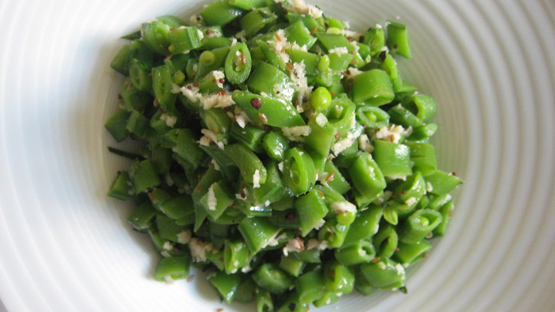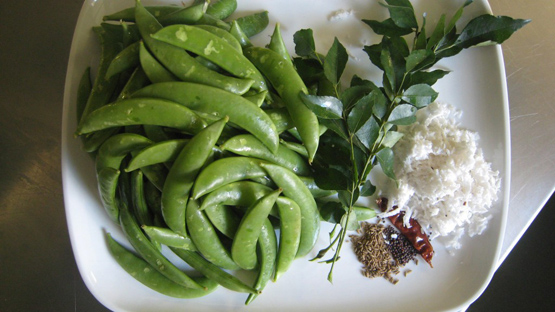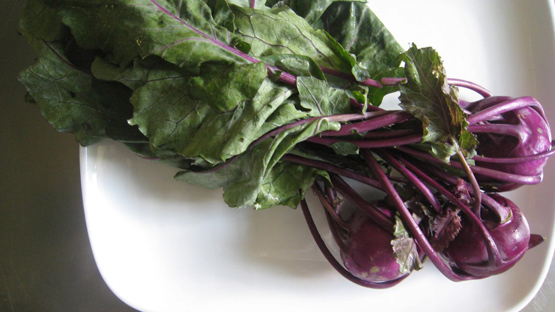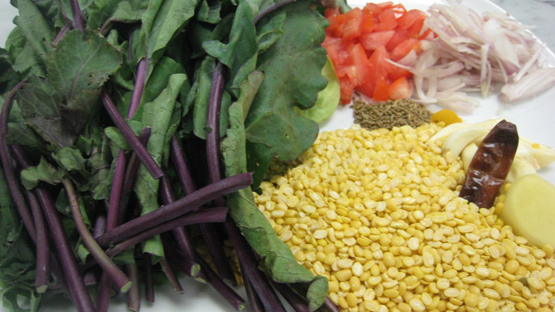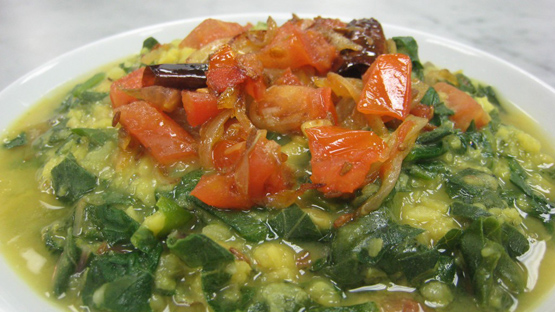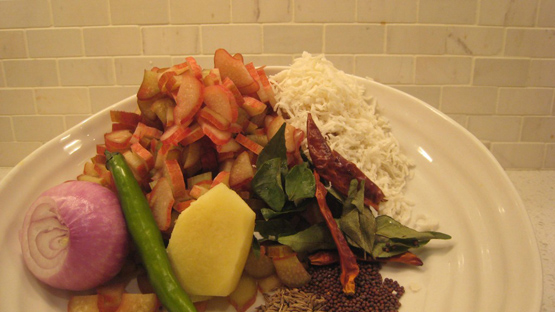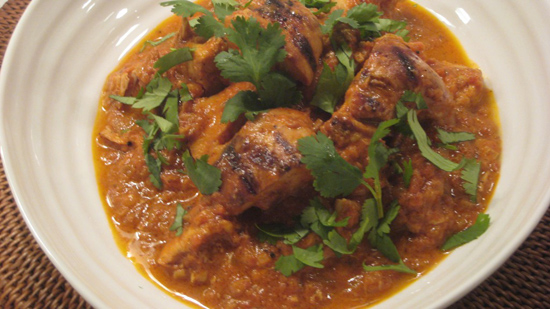The annual abundance of snap peas has started. I love their crispness and versatility in that they can be used, either raw or cooked, in so many styles of cuisine. On a visit to Chennai I was fortunate enough to meet a fantastic cook and author, Viji Varadarajan. She spent the afternoon with me explaining the subtle nuances of a pure vegetarian Brahmin kitchen and household. For lunch she presented a sumptuous feast of close to 20 different dishes served on a large banana leaf. There were so many standout bites but one in particular summarized her style of cooking. A simple long bean kari, accented with curry leaves, grated coconut and a few spices. It was vibrant, full of life, understated yet complex- much like Viji herself. Although this vegetarian recipe calls for snap peas, green or yellow beans, snow peas, or many other vegetables can be used to prepare this quick and easy recipe.
- 1 pound (3 cups) snap peas
- 3-4 branches (36-40 leaves) curry leaves, julienned
- 2 tablespoons grated coconut, fresh or frozen
- ½ dried red chile
- 1 teaspoon cumin seeds
- ¼ teaspoon mustard seeds
- 1 teaspoon oil
- Salt, to taste
NOTE: This was originally posted on my blog India On My Plate on July 7, 2011

